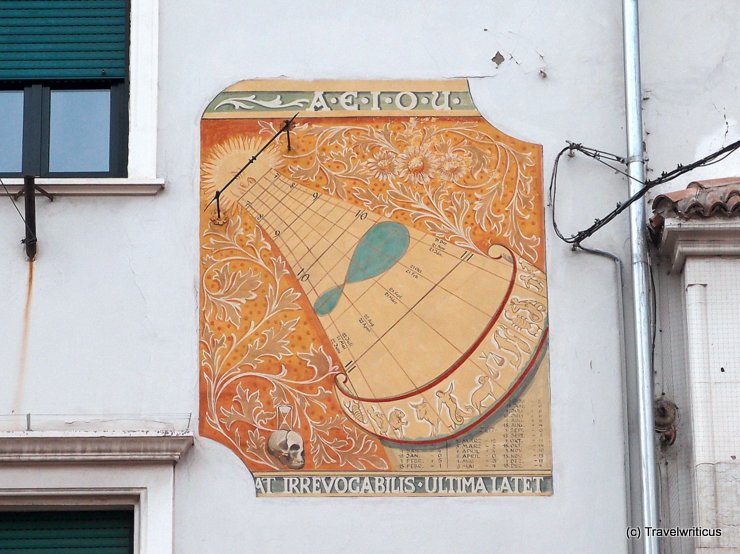
This sundial in Merano impresses with a lot of details and codes. For example, you see the motto of Frederick III (A.E.I.O.U.). There is also a memento mori formed by a skull and an hourglass on top of it.
Browse through your travel destination!

This sundial in Merano impresses with a lot of details and codes. For example, you see the motto of Frederick III (A.E.I.O.U.). There is also a memento mori formed by a skull and an hourglass on top of it.
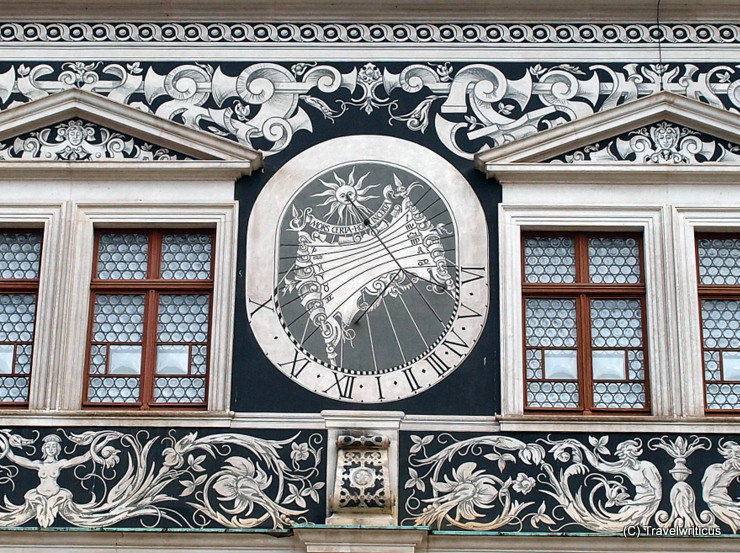
You find this sundial on a building along the Stallhof in Dresden. The Stallhof is a court of the Dresden Castle (Dresdner Residenzschloss). It formed a venue for tournaments in earlier times.
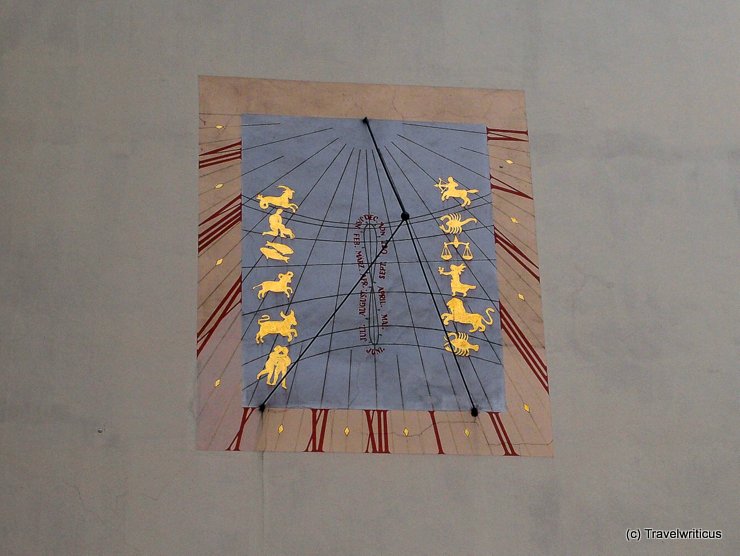
The Zwehrenturm, standing next to the Fridericianum in Kassel, is a remnant of the old town fortifications. A sundial with multiple hour lines, dating back to the 18th century, adds a colourful touch to the white tower. Its golden symbols represent the zodiacs.
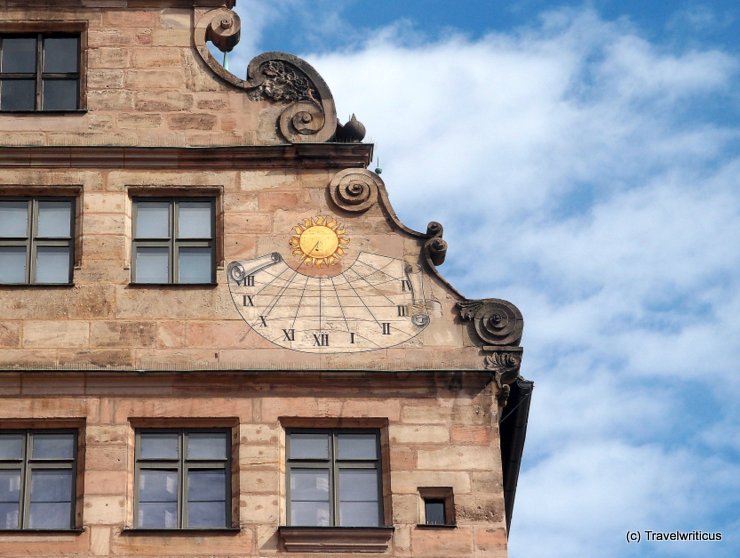
You find this sundial on the facade of the Fembohaus in Nuremberg. The Fembohaus is the home of the Nuremberg City Museum. Inside, you see a city model of Nuremberg before World War II.
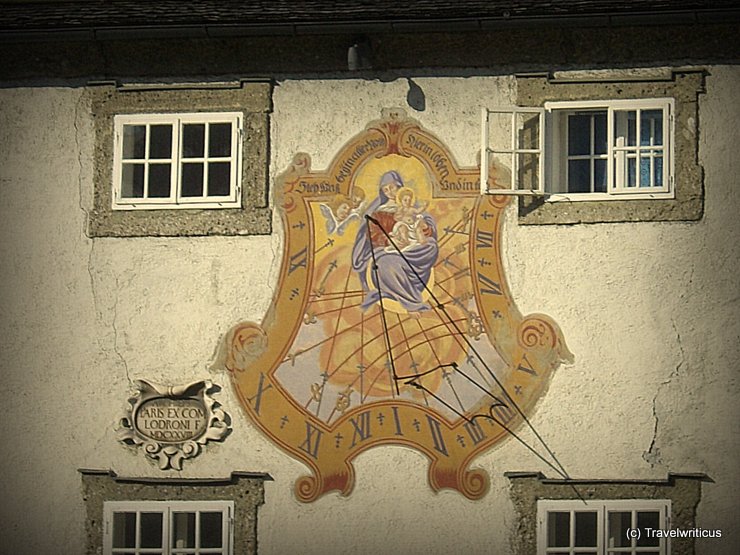
The Zeugwartstöckl in Salzburg is the surviving guardhouse of the demolished Michaelstor (Michael Gate). It stands between Mozartplatz and Rudolfskai. Salzburg visitors see this sundial, dating back to 1628, on the facade facing Mozartplatz.
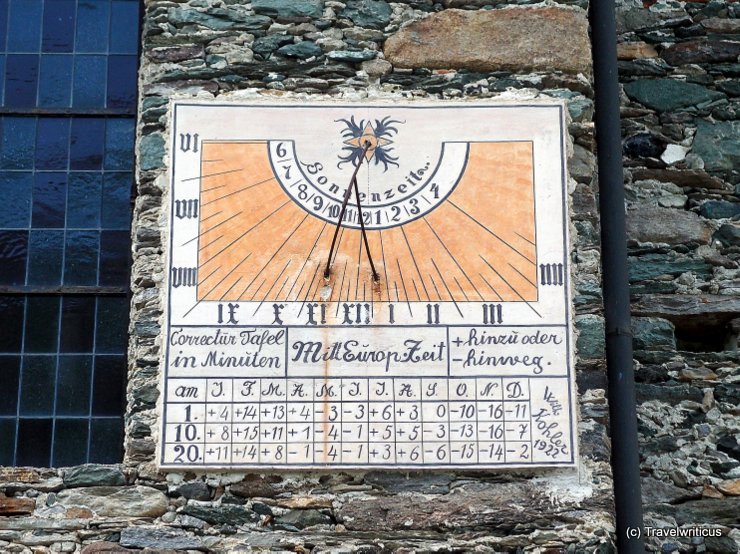
An elaborate version of a sundial on a chapel in Hinterbichl, a district in Prägraten am Großvenediger. The table provides info on how to calculate the exact time considering the different altitudes of the sun during the year.
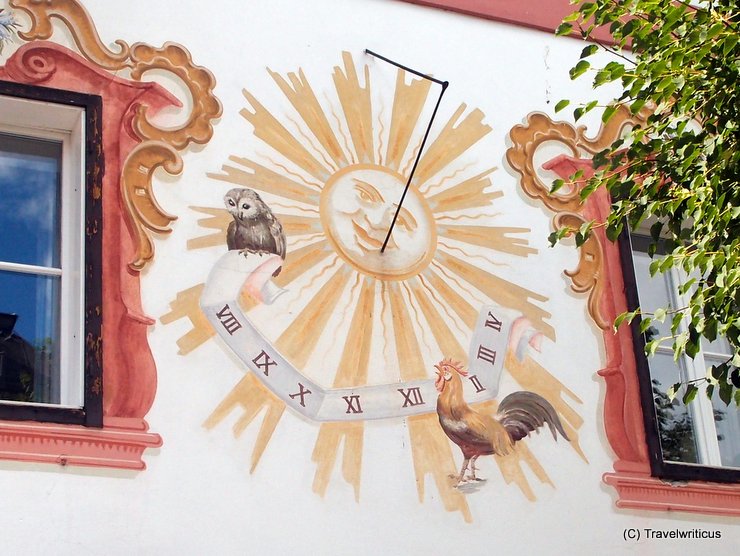
You find this sundial on a building in the Austrian city of Zell am See. A rooster and an owl represent morning and evening. Whereas the painting seems modern, the town offers several buildings dating back to the Middle Ages.
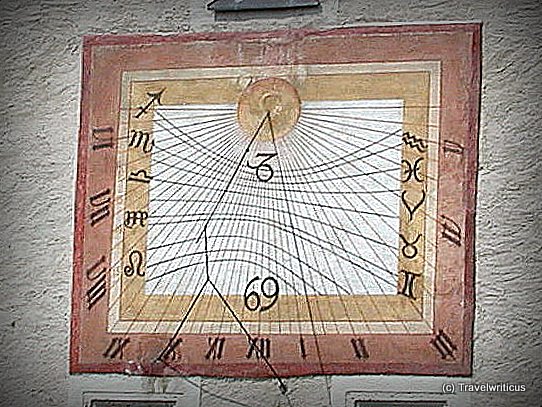
Sundial fans find this piece on an outer wall of St Mary’s Church in Maria Saal. The church is also known as Propstei- und Wallfahrtskirche Mariae Himmelfahrt or Maria Saaler Dom.
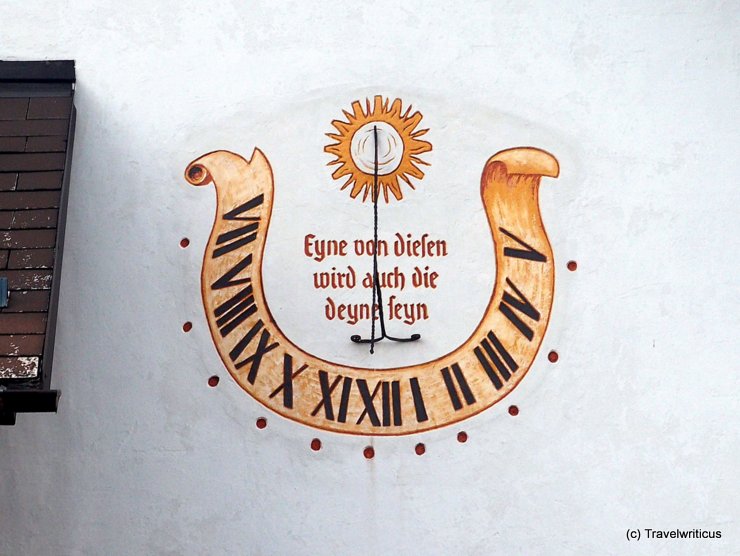
A thoughtful adage seen at a sundial in Haus written in old German: ‘Eyne von diesen wird auch die deyne seyn’. It means: One of these hours will be yours. This writing is a kind of memento mori reminding us that everybody will die one day.
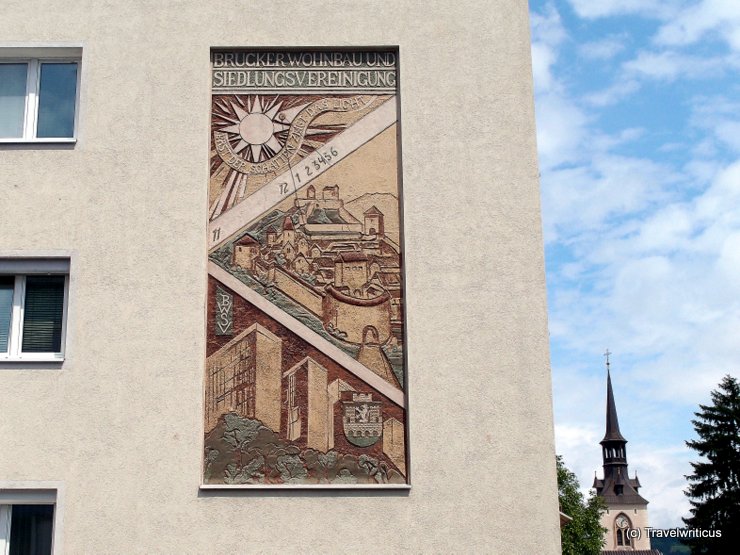
This sundial shows two depictions of Bruck an der Mur, a city in the Austrian state of Styria. In the upper part of the mural, you see Landskron Castle and the former town walls.
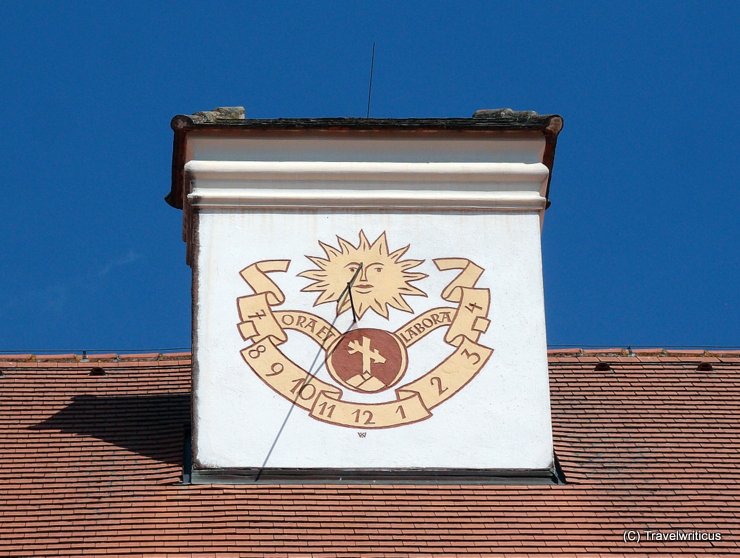
The inscription on this sundial indicates at which kind of monastery you can see it. “Ora et Labora” is the motto of the Benedictines. The depiction in the middle gives a hint to the place. You see this element in the coat of arms of Seitenstetten.
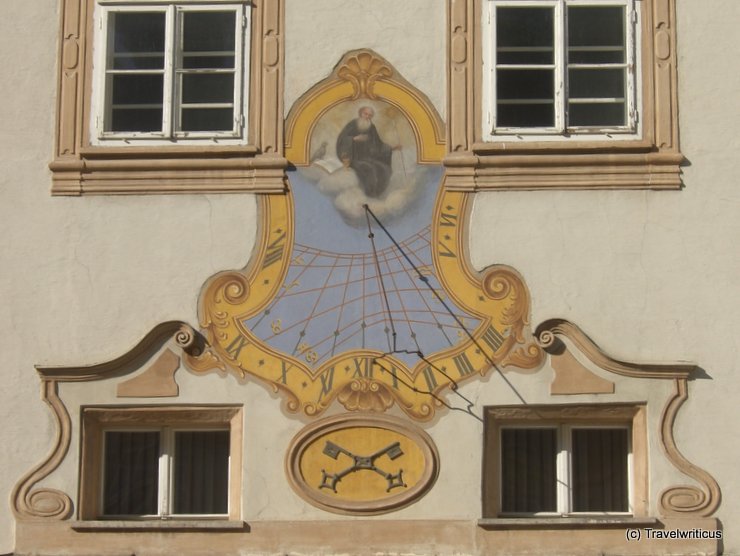
You find this sundial in a yard of St Peter’s Archabbey (Erzabtei St. Peter) in Salzburg. While looking at this fresco, two questions arise: Who is the bearded man, and what do the keys mean? The answer lies in the history of the abbey.